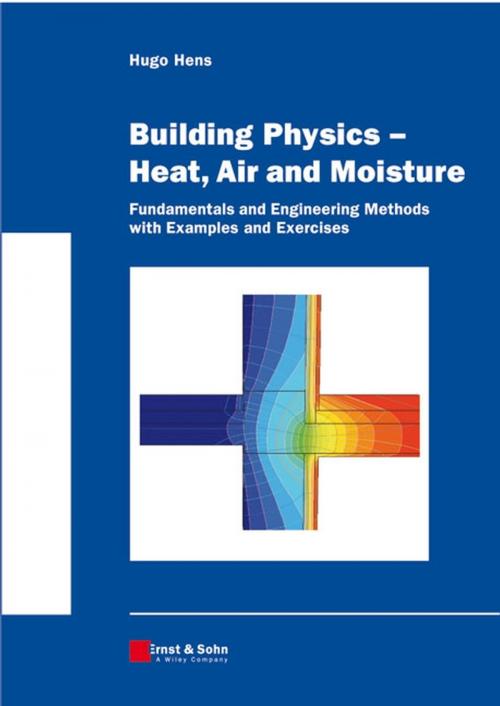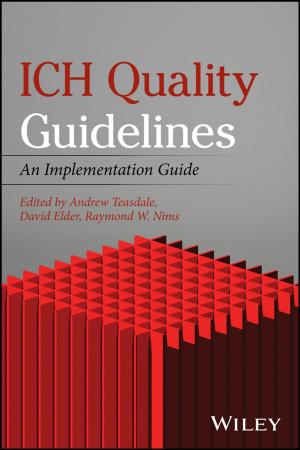Building Physics -- Heat, Air and Moisture
Fundamentals and Engineering Methods with Examples and Exercises
Nonfiction, Science & Nature, Technology, Construction & Construction Trades| Author: | Hugo S. L. Hens | ISBN: | 9783433601303 |
| Publisher: | Wiley | Publication: | January 9, 2012 |
| Imprint: | Ernst & Sohn | Language: | English |
| Author: | Hugo S. L. Hens |
| ISBN: | 9783433601303 |
| Publisher: | Wiley |
| Publication: | January 9, 2012 |
| Imprint: | Ernst & Sohn |
| Language: | English |
Bad experiences with construction quality, the energy crises of 1973 and 1979, complaints about 'sick buildings', thermal, acoustical, visual and olfactory discomfort, the move towards more sustainability, have all accelerated the development of a field, which until 35 years ago was hardly more than an academic exercise: building physics.
Through the application of existing physical knowledge and the combination with information coming from other disciplines, the field helps to understand the physical performance of building parts, buildings and the built environment, and translates it into correct design and construction.
This book is the result of thirty years teaching, research and consultancy activity of the author.
The book discusses the theory behind the heat and mass transport in and through building components. Steady and non steady state heat conduction, heat convection and thermal radiation are discussed in depth, followed by typical building-related thermal concepts such as reference temperatures, surface film coefficients, the thermal transmissivity, the solar transmissivity, thermal bridging and the periodic thermal properties. Water vapour and water vapour flow and moisture flow in and through building materials and building components is analyzed in depth, mixed up with several engineering concepts which allow a first order analysis of phenomena such as the vapour balance, the mold, mildew and dust mites risk, surface condensation, sorption, capillary suction, rain absorption and drying. In a last section, heat and mass transfer are combined into one overall model staying closest to the real hygrothermal response of building components, as observed in field experiments.
The book combines the theory of heat and mass transfer with typical building engineering applications. The line from theory to application is dressed in a correct and clear way. In the theory, oversimplification is avoided.
This book is the result of thirty years teaching, research and consultancy activity of the author.
Bad experiences with construction quality, the energy crises of 1973 and 1979, complaints about 'sick buildings', thermal, acoustical, visual and olfactory discomfort, the move towards more sustainability, have all accelerated the development of a field, which until 35 years ago was hardly more than an academic exercise: building physics.
Through the application of existing physical knowledge and the combination with information coming from other disciplines, the field helps to understand the physical performance of building parts, buildings and the built environment, and translates it into correct design and construction.
This book is the result of thirty years teaching, research and consultancy activity of the author.
The book discusses the theory behind the heat and mass transport in and through building components. Steady and non steady state heat conduction, heat convection and thermal radiation are discussed in depth, followed by typical building-related thermal concepts such as reference temperatures, surface film coefficients, the thermal transmissivity, the solar transmissivity, thermal bridging and the periodic thermal properties. Water vapour and water vapour flow and moisture flow in and through building materials and building components is analyzed in depth, mixed up with several engineering concepts which allow a first order analysis of phenomena such as the vapour balance, the mold, mildew and dust mites risk, surface condensation, sorption, capillary suction, rain absorption and drying. In a last section, heat and mass transfer are combined into one overall model staying closest to the real hygrothermal response of building components, as observed in field experiments.
The book combines the theory of heat and mass transfer with typical building engineering applications. The line from theory to application is dressed in a correct and clear way. In the theory, oversimplification is avoided.
This book is the result of thirty years teaching, research and consultancy activity of the author.















